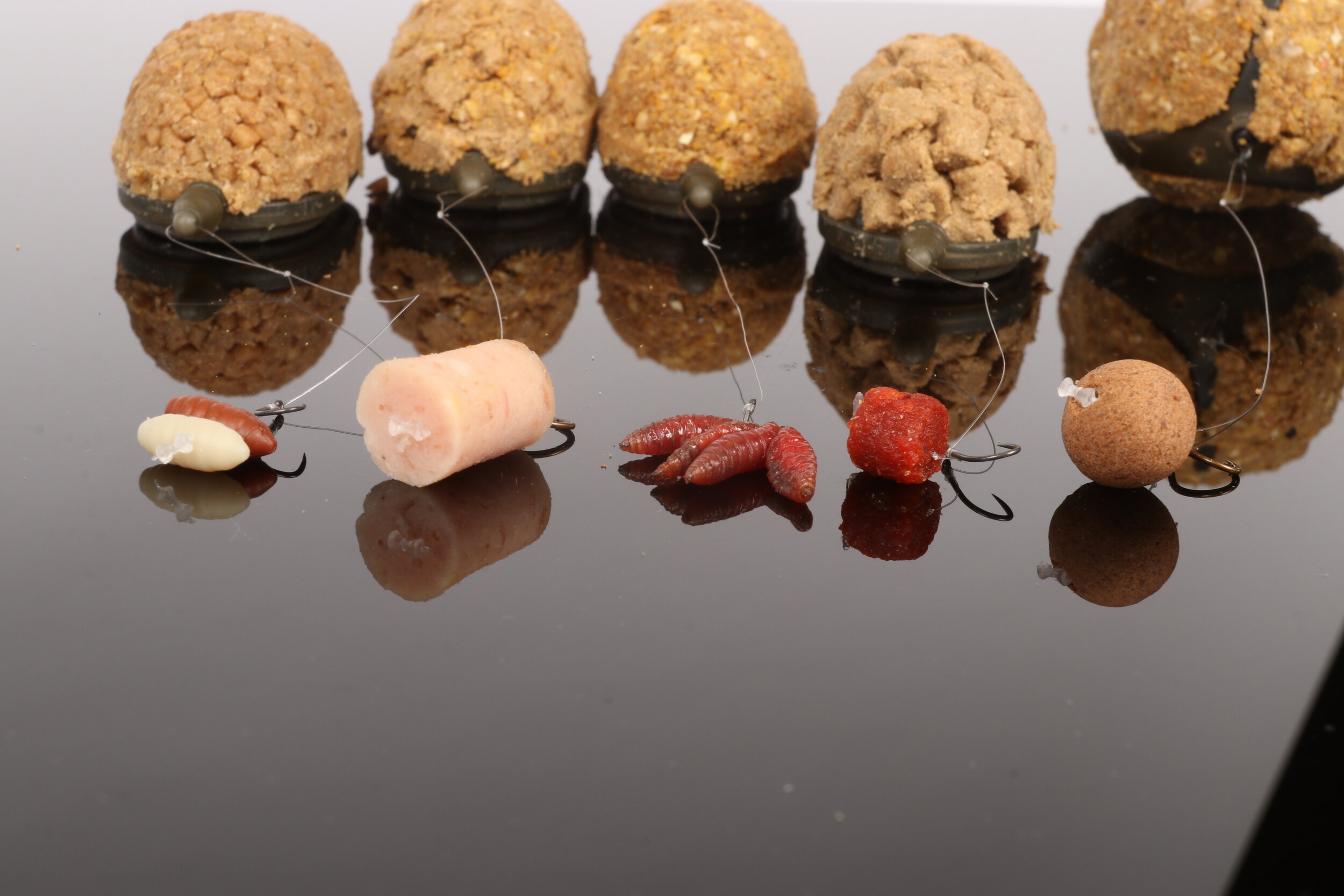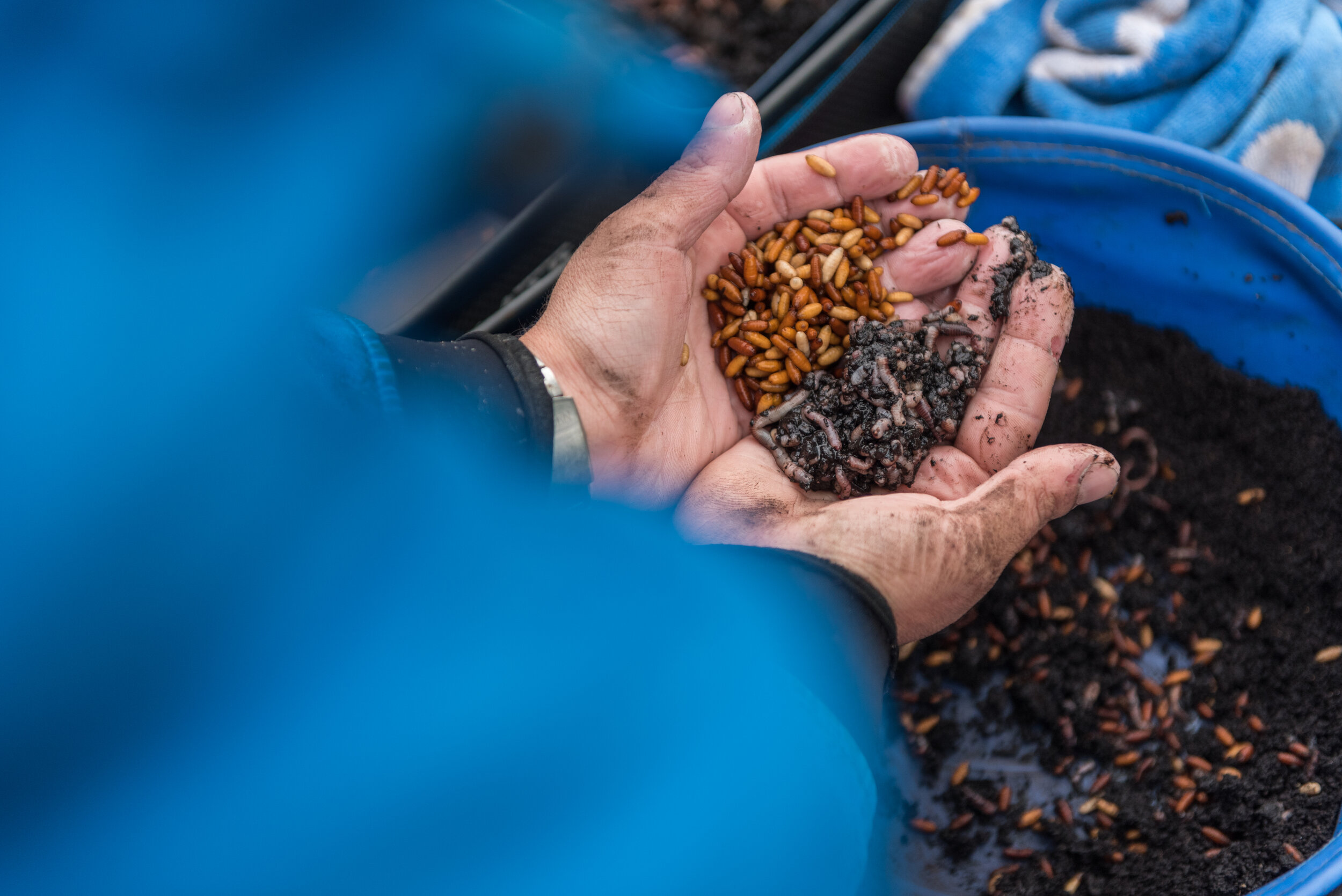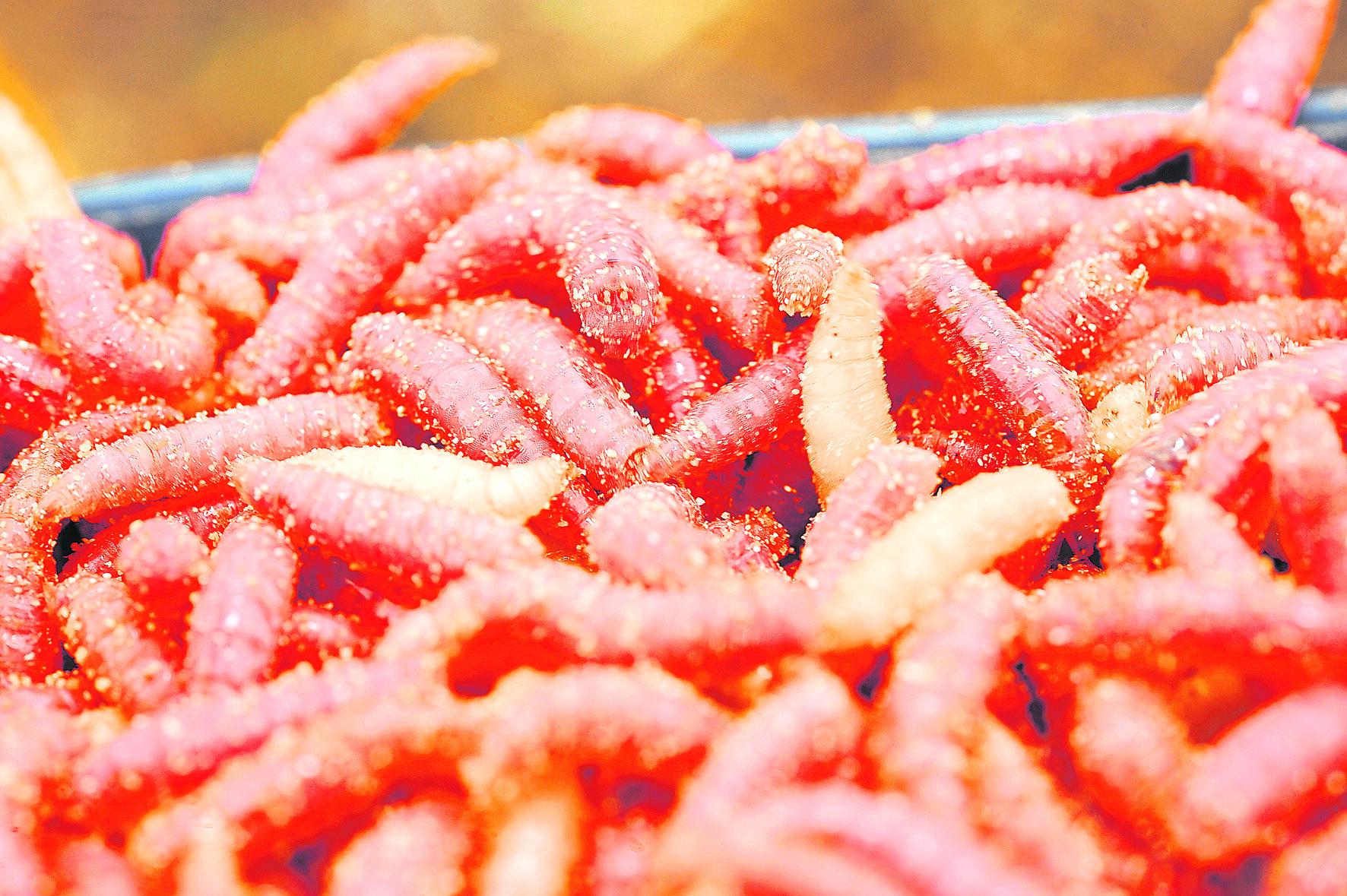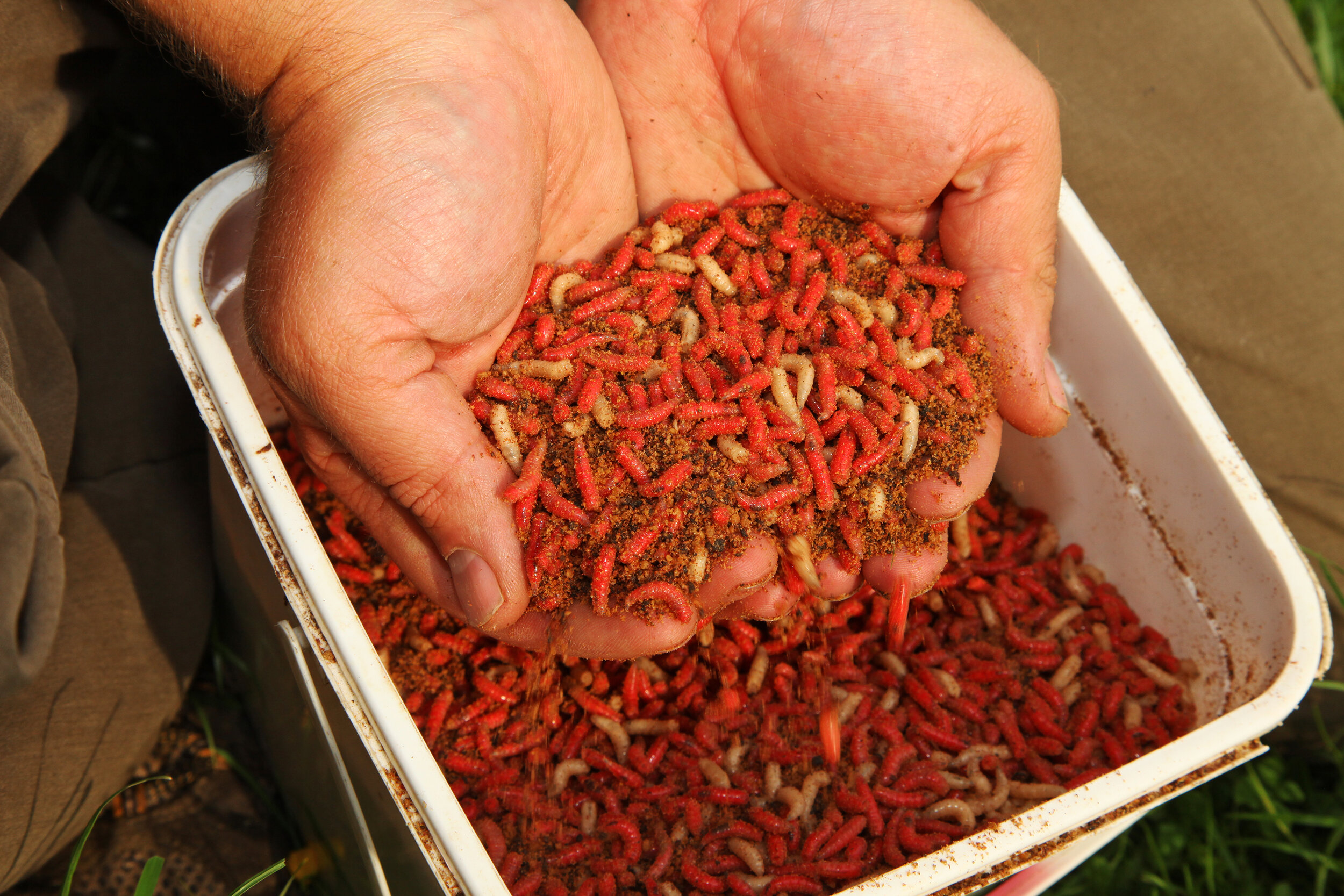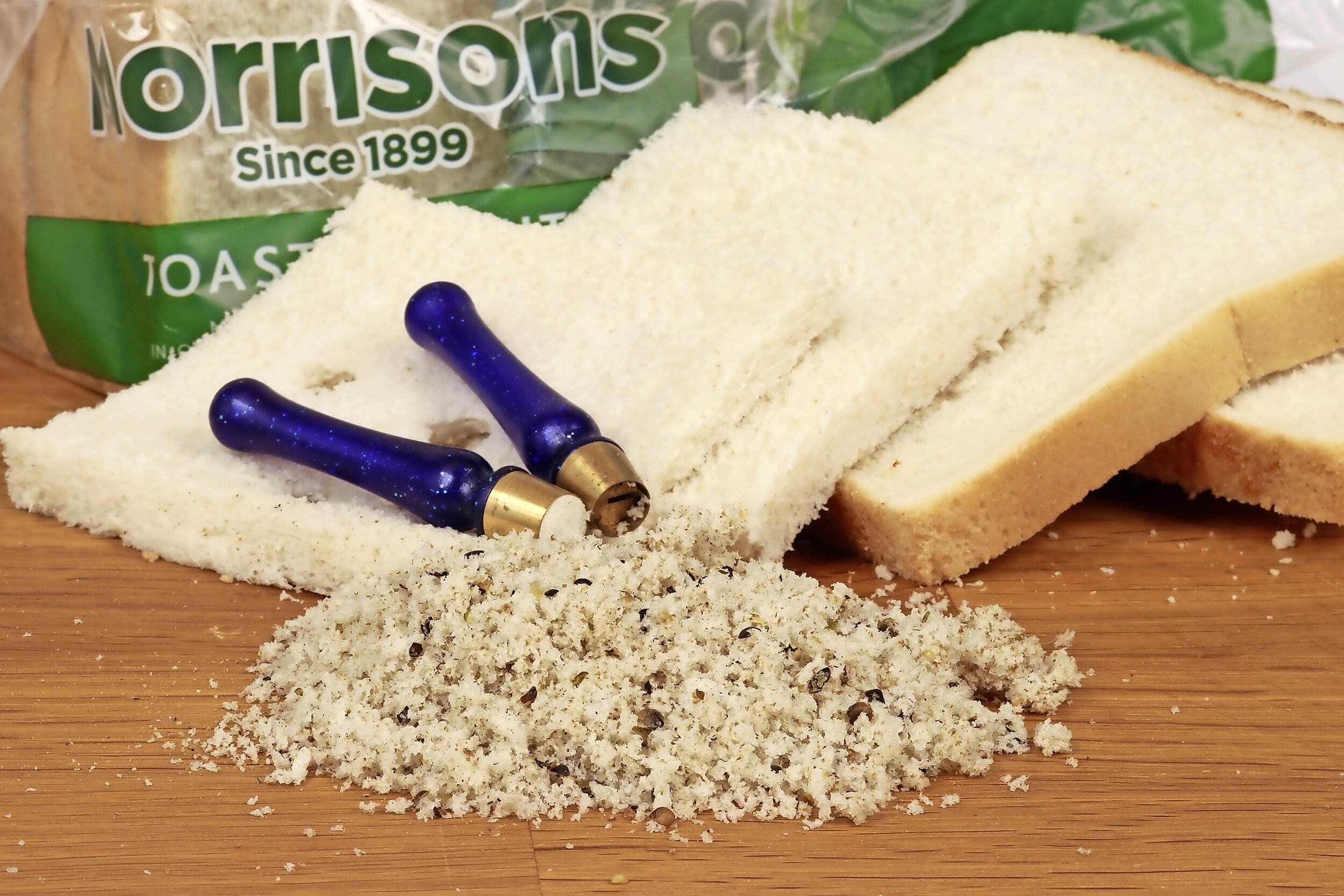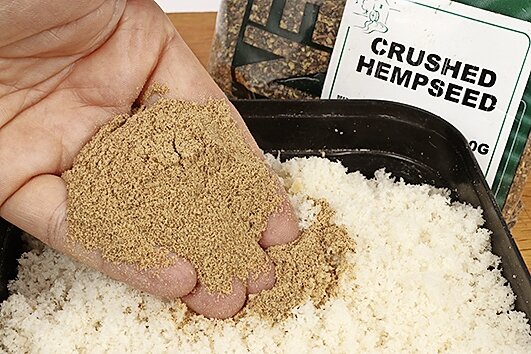5 Tips On Groundbait For Roach
No roach angler worth their salt would be without groundbait at this time of year – here’s how to use it!
ADD FREEBIES
GROUNDBAIT alone is not enough to keep the fish in the peg and, because you want them to eat the hookbait, you have to add the same into the feed. For roach, that’s dead pinkies, dead maggots and casters – the three most common hookbaits. In the opening balls of feed, add very few free offerings. Once these are fed, pop in two more balls that are rich in feed (packed with casters and pinkies) to create a focal point in the swim to fish over. On a hard day that may be just a sprinkling, but on a mild day with colour in the water, pack each ball with feed. Dead pinkies are great because they are soft, visible and small enough to get fish grubbing about.
Add freebies to your groundbait
TRY USING LEAM
YOU can add leam to normal groundbait, which will make the mix behave very differently. Leam used to be seen as something that was only used with bloodworm and joker, but when this fine, powdered clay is added to over-wetted groundbait it achieves two things. First, it adds some weight and second, it breaks the ball down quicker on the bottom. Depending on how much leam you add, you can make a ball split almost immediately, leaving a lingering cloud, which can be dynamite in shallow, clearish water. Heavy leams are also available that will combat strong flows in deep water, getting a ball to the bottom in seconds.
Leam will make the mix behave very differently
BALL IT... THEN CUP
THE best way to get a lot of groundbait into the peg quickly is to throw in several large balls, known as ‘balling in’. You’ll see this a lot on big, deep natural venues where small fish are the target. A massive hit kicks the peg off quickly, but you need to decide on how many balls to throw in. There’s no point scrimping on numbers, so eight or 10 large balls can go in over an area of a square metre. A pole cup then comes into play. The opening hit gets fish into the general area, but you want them to move and concentrate on the spot where your rig is. Two or three more balls go in with the pot in the same place, but these hold more particles.
A pole cup is a great way to feed throughout the session
RIDDLE YOUR MIX
ASIDE from removing any large lumps of part-mixed groundbait, riddling also adds air into a mix, which makes it sink quickly and break up fast. Without being put through a riddle, the groundbait can be too stodgy and struggle to come apart. When you’ve riddled the mix, you need to decide what to do with the bigger particles that you’ll have left over. These can be thrown away if the fishing is likely to be hard, but on more prolific days they can be pushed by hand through the riddle to put some bigger bits and bobs into the mix.
Riddling your groundbait has many advantages
FEED IT LOOSE
THERE are times when cupping in groundbait loose is better than balling it in, and this is normally in very shallow water of 3ft or less. A loose mix also gets things underway much faster because the groundbait is already broken down and can work its magic straight away. It’s important that the mix is wet, so it has the weight to get down quickly and stay put on the bottom without any danger of drifting off, especially in flowing water. Loose groundbait also works on canals and drains with steep marginal slopes under the water – a hard ball may roll down this slope, away from where you’re fishing. Loose groundbait will form a carpet just where you want it, and never move!
Sometimes groundbait is best fed loose
Can paste be used on a leger rig? - Paul Garner
Paste can be used on rod and line, but for it to withstand the impact of hitting the water while being towed by a big lead it needs to be sticky.
This is easy to achieve, and there are several purpose-made paste mixes for this job. Follow the mixing instructions carefully with these baits, as the paste needs time to form strands of gluten that bind it together.
You can tell when the paste is ready to use as it will be almost stringy when you pull it apart.
A hair rig will also help you hook more fish when legering paste. Try moulding the bait around a paste cage, as this will keep it attached without impeding the hookpoint.
A paste cage on a hair rig is perfect for legering paste
The best method feeder hookbaits - Paul Garner
Hookbait choice can make a huge difference to your Method feeder catches.
Some score best with bigger fish, while others will win you extra bites on tough days. Here’s my pick of the bunch...
Picking the right hookbait can get extra bites on the method feeder
Fake baits
Artificial casters will pick off bigger fish than the real thing, and are great when there are a lot of nuisance fish around. Most packs contains different colours, so see which one the fish prefer on the day.
Dark baits often score in summer, but the off-white ones can bring bonus fish when the going gets tough.
Best for: Tench, crucians and carp
Artificial casters will pick off bigger fish
Punched meat
Easy to use, and with a distinctive taste that carp love, punched meat is one of my favourite Method hookbaits for larger carp.
Cut the meat into 10mm-thick slices and use a bait punch to produce perfect 6mm hookbaits, stepping up to 10mm when they are feeding well.
Best for: Big carp
One of my favourite baits for larger carp
Dead maggots
A bunch of four dead red maggots is very effective, especially in the cold, when small fish are less active. I like to use maggots that have been frozen.
They have a soft, stretched appearance, but are still quite tough. Use a bunch on a size 12 hook.
Best for: Bream, tench and carp
Dead maggots come into their own when it is cold
Pellets
For Method fishing I like an 8mm tough hooker pellet. The consistency is ideal for hair rigs, and I use them with a Quick Stop to make baiting-up simple.
In summer go for savoury flavours, while in winter, sweeter flavours work better.
Best for: Carp, tench, bream and F1s
Go for savoury pellets in the summer
Wafters
These slightly buoyant hookbait boilies only just sink, and hover just above the bottom. Being semi-buoyant, they are easy for larger fish to suck up, giving more bites and better hookholds too.
Wafters are tough baits, so you can often catch several fish on the same one. Hair-rig them using a boilie spike for best results.
Best for: Carp and bream
You can often catch several fish on the same wafter
How to make worm and caster last longer - Tony Curd
MY FAVOURITE method of doing this is to riddle the peat off the worms and use this to make your feed go further.
Fish a stiffer mix for bigger fish
Depending on the venue, this should be mixed sloppy if fishing up in the water or when targeting smaller fish, or mixed stiffer when fishing on the bottom for bigger fish such as carp or barbel.
To the peat I add a small amount of chopped worm and a handful of casters, and I feed this mix through a pole pot regularly.
Add a small amount of chopped worm and caster to the peat
You’ll be surprised at the big weights you can put together on very little bait when doing this!
It catches everything!
What's the best all-round maggot colour? - Bob Nudd
I’d take the colour of the water into account because when there’s a brown tinge to the water, bronze maggots work really well for roach, dace and chub especially on waggler or stick float tactics.
My favourite all-round colour is the red maggot, and that’s because I think that they look like a bloodworm, which is the natural diet of many fish.
It’s also worth using a fluorescent pink maggot as a change bait, as again, the colour really stands out.
For more of your angling questions answered, turn to our ‘Ask The Experts’ section of the magazine each Tuesday.
How to make doughy cheesepaste with Paul Garner
Even when the water is really cold, Doughy cheesepaste stays pliable, making this my favourite recipe. A batch will last several weeks if you keep it cool between trips. Here is how to make it…
1: Carefully melt some blue cheese in a microwave set on half power for about 30 seconds.
2: Knead a fist-sized lump of dough until it has warmed up and softened.
3: Flatten the dough out and then spread the melted blue cheese on to it.
4: Sprinkle on a teaspoonful of Squid Powder and a tablespoonful of Parmesan.
5: Fold the paste in half and work it for five minutes until everything is evenly mixed.
Make it buoyant
1: With a bait drill bore a hole through a small piece of cork (wine bottle corks work fine)
2: Superglue the drilled cork to the shank of your hook, leaving the point well clear.
3: Fold a piece of cheesepaste over the hook and cork, covering them completely.
4: The finished bait – you can strike straight through it when a chub takes a bite.
For more great bait tips from Dr Paul Garner, pick up the magazine each Tuesday!
"It has to be bread for river roach" with Dr Paul Garner
Roach are staging a substantial comeback. Whether from the tremendous work of the Avon Roach Project, or natural recruitment on other rivers, big roach are out there for those willing to look for them.
Very often the first clues are fish caught by accident, often by chub or barbel anglers, using heavy gear. Be quick to follow up on these leads and you might just strike the silver fish mother lode.
WORLDS APART
Quite why river roach should be willing to feed on a much wider range of baits than their stillwater cousins, especially in the winter, can only be guessed at. I think it is probably because in stillwaters small invertebrates make up virtually all of the fish’s diet. This means that they become fixated on small baits, such as maggots.
In rivers, big roach will have a wider natural diet, and so are not as choosy. Heavily-fished carp lakes are almost a halfway house, with large volumes of boilies, sweetcorn and pellets going in to supplement the roach diet. Yet, even here, the number of big roach caught on these baits can be minuscule, especially in winter.
PUNCH IT
I grew up among an older generation of dyed-in-the-wool roach anglers whose tactics are just as good today as they were back then. Bread was their bait of choice, normally fished under a big balsa float to hold the line when trotting downstream. Today we might prefer to quivertip with a small feeder, but the bait choice remains the same
A decent-sized piece of bread can be a very selective bait, picking out the bigger fish.
A punch of around 8mm is perfect for producing big-roach hookbaits, although you must get the texture right to keep the bread on the hook. Look for a thick-sliced white loaf with a dense structure. Cheaper loaves tend to be full of air pockets that lead to their falling to bits.
To toughen up your slices of bread, compress them overnight. I use an offcut of kitchen worktop heavy enough to halve the thickness of the slices overnight.
Place a damp cloth between the bread and the weight to stop it sticking and to add a little moisture. Store the slices of bread in an airtight bag to stop them drying out.
TRY A CAGE
A small cage feeder is an easy way of feeding bread. A dry mix will hold in the feeder, but break down quickly. Drop your feeder into a bait tub of water to see how long it takes to break down.
CLOUDY FEED
Whether I am floatfishing or feeder fishing, my feed is based on punch crumb. This very fine white crumb is much less sticky than normal white breadcrumb and has an almost gritty texture. Mixed dry it will form an excellent cloud in the water column, but add a tiny bit more water and it will hold together and sink quickly.
Alternatively, remove the crusts from a few slices and put the white flake through a food liquidiser until it has been ground to a fine consistency.
This liquidised bread holds together perfectly in a cage feeder, and can be added to punch crumb when floatfishing to help get it down.
Roach don’t have big appetites, so avoid adding any larger pieces of bread to the feed. Two ingredients that are worth adding are a pinch of crushed hemp and the same of crushed pellets. Using pellets for river roach may seem odd, but roach do like the taste of pellets, even in rivers where they aren’t used a great deal.
MY CAGE FEEDER MIX
A combination of liquidised flake and punch crumb makes the ideal feed for a cage feeder.
Here is how I make mine...







